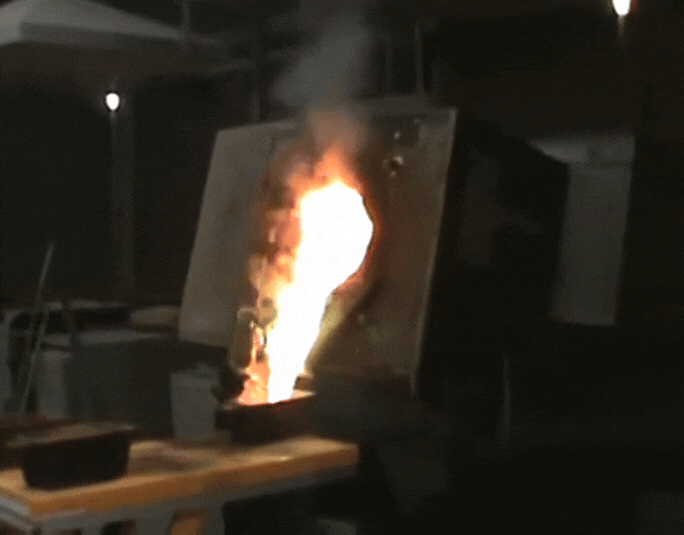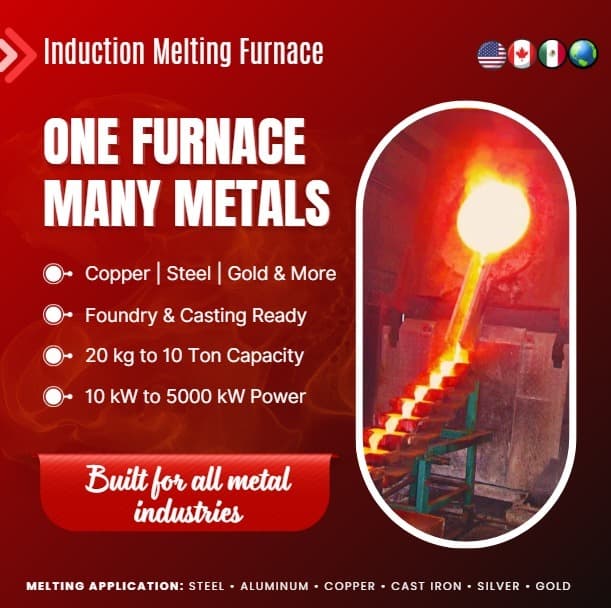
Induction forging is a process that uses induction heating to pre-heat metals before shaping them with a press or hammer. It can reach high temperatures to make the metals malleable and aid flow in the forging die. It is a quick and energy-efficient process that improves productivity, quality, reliability, and flexibility. It can be used for various metals and applications in the metal and foundry industries.
An induction forging machine is a device that consists of an induction power supply, an induction coil, a water cooling system, a material feeding system, and a control system. The induction power supply generates an alternating current that flows through the induction coil, creating a magnetic field. The magnetic field induces eddy currents in the metal part placed inside the coil, heating it rapidly and uniformly. The water cooling system circulates water through the coil and the power supply to prevent overheating. The material feeding system delivers the metal part to the coil and then to the press or hammer for forging. The control system monitors and adjusts the parameters of the induction heating process, such as power, frequency, temperature, and time.
An induction forging machine can offer several advantages over conventional heating methods, such as:
An induction forging furnace is a device that uses induction heating to pre-heat metal billets or ingots before they are transferred to a press

or hammer for forging. It consists of a refractory-lined chamber that contains one or more induction coils, a water cooling system, a material loading and unloading system and a control system. The induction coils generate a magnetic field that heats the metal billets or ingots placed inside the chamber. The water cooling system circulates water through the coils and the furnace walls to prevent overheating. The material loading and unloading system moves the metal billets or ingots in and out of the furnace chamber. The control system monitors and adjusts the parameters of the induction heating process, such as power, frequency, temperature and time.
An induction-forging furnace can offer several benefits over conventional heating methods, such as:
| Feature | Induction Forging Equipment | Conventional Forging Equipment |
| Heating method | Induction heating | Gas or electric furnace |
| Heating speed | Faster | Slower |
| Heating uniformity | More uniform | Less uniform |
| Energy efficiency | More efficient | Less efficient |
| Environmental impact | Cleaner | More polluting |
| Cost | Higher | Lower |
Induction heating for forging is a technique that uses induction heating to pre-heat metal parts before they are shaped or deformed by presses or hammers. It can be applied to various metals and shapes for different forging applications, such as:
Induction heating for forging can offer several advantages over conventional heating methods, such as:

| Advantage | Induction Heating | Conventional Heating Methods |
| Faster heating | Induction heating can heat metal much faster than conventional heating methods. This can save time and energy. | Heating time is slower. |
| More uniform heating | Induction heating can heat metal more uniformly than conventional heating methods. This results in better quality parts. | Heating is less uniform. |
| Cleaner | Induction heating is a cleaner process than conventional heating methods. This is because it does not produce harmful emissions. | More polluting. |
| More precise temperature control | Induction heating allows for more precise temperature control than conventional heating methods. This is important for certain applications, such as heat treating. | Less precise temperature control. |
An induction heater for forging is a device that uses induction heating to pre-heat metal parts before they are shaped or deformed by presses or hammers. It can be classified into two types based on the configuration of the induction coil:
An induction heater for forging can offer several benefits over conventional heating methods, such as:
We are advisors and consultants to a wide range of industries—including Foundries, Steel Plants, Mining operations, Metal Mills, Universities, Military
institutions, Aerospace, and metal processing industry.
Our mission is to help clients reduce energy consumption and identify the most efficient induction furnace solutions ailored to their specific perational needs



